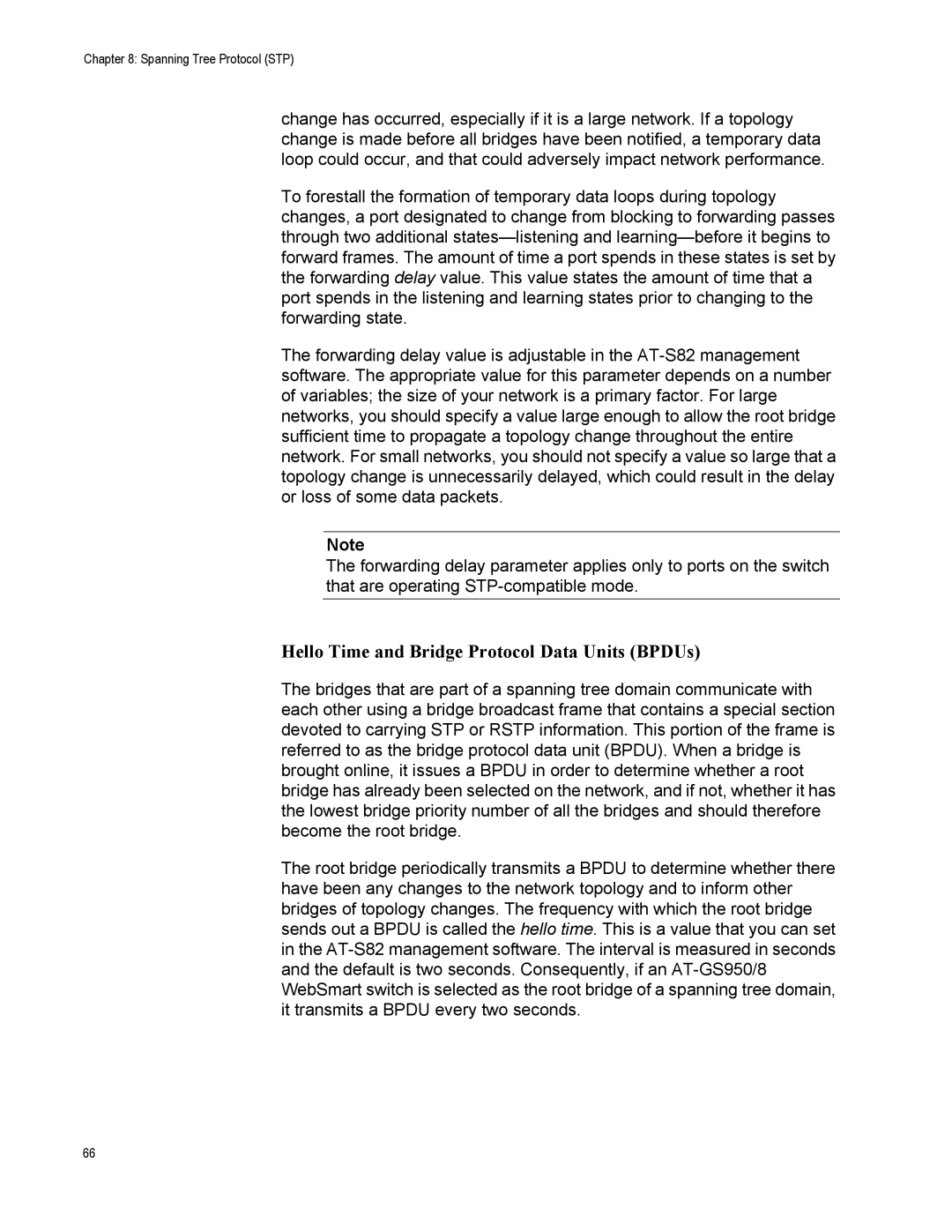
Chapter 8: Spanning Tree Protocol (STP)
change has occurred, especially if it is a large network. If a topology change is made before all bridges have been notified, a temporary data loop could occur, and that could adversely impact network performance.
To forestall the formation of temporary data loops during topology changes, a port designated to change from blocking to forwarding passes through two additional
The forwarding delay value is adjustable in the
Note
The forwarding delay parameter applies only to ports on the switch that are operating
Hello Time and Bridge Protocol Data Units (BPDUs)
The bridges that are part of a spanning tree domain communicate with each other using a bridge broadcast frame that contains a special section devoted to carrying STP or RSTP information. This portion of the frame is referred to as the bridge protocol data unit (BPDU). When a bridge is brought online, it issues a BPDU in order to determine whether a root bridge has already been selected on the network, and if not, whether it has the lowest bridge priority number of all the bridges and should therefore become the root bridge.
The root bridge periodically transmits a BPDU to determine whether there have been any changes to the network topology and to inform other bridges of topology changes. The frequency with which the root bridge sends out a BPDU is called the hello time. This is a value that you can set in the
66
